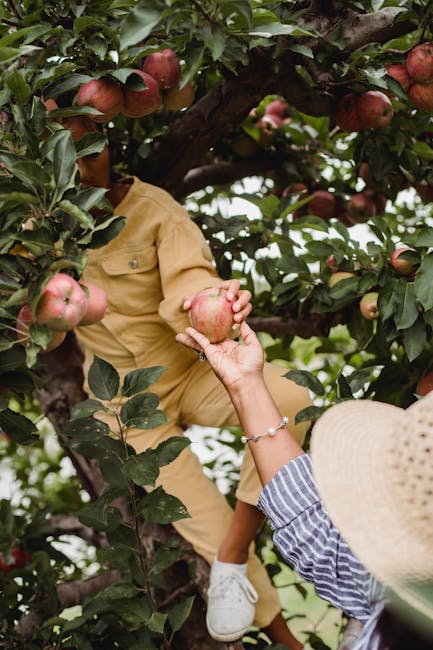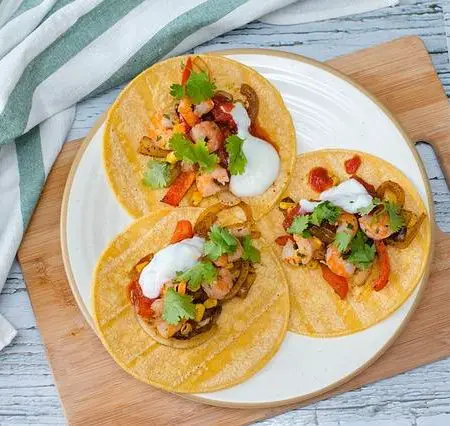Welcome, adventurous foodies and conscientious travelers, to the ultimate foodie survival guide for navigating the treacherous waters of sustainable dining. In a world filled with endless options and confusing choices, finding ethical and eco-friendly food can be like trying to spot a vegan in a steakhouse – a daunting task indeed. But fear not, brave gourmands, for we are here to help you conquer the culinary battlefield and emerge victorious, one guilt-free bite at a time. So grab your reusable bamboo chopsticks and let’s embark on a flavorful journey to becoming the ultimate ethical traveler. Bon appétit!
Contents
Sourcing Locally: Supporting Community Farmers and Producers
Who needs a supermarket when you have community farmers and producers right in your own backyard? By sourcing locally, we not only support our neighbors, but we also get to enjoy fresh, high-quality products that are bursting with flavor!
When you buy locally, you’re helping to keep small businesses alive and thriving. Plus, you’re reducing your carbon footprint by cutting down on the miles your food has to travel to get to your plate. It’s a win-win for everyone involved!
Imagine waking up on a Saturday morning, heading to your local farmer’s market, and being greeted by rows of vibrant, colorful produce just waiting to be transformed into delicious meals. It’s like a treasure hunt for your taste buds!
So, next time you’re in need of some groceries, skip the big chain stores and opt for the farm-fresh goodness that awaits you right in your own community. Your stomach (and your community farmers) will thank you!
Minimizing Food Waste: Adopting Sustainable Practices in Restaurants
When it comes to minimizing food waste in restaurants, it’s all about adopting sustainable practices that not only benefit the environment but also your bottom line. From reducing portion sizes to getting creative with leftovers, there are plenty of ways for restaurants to make a difference.
One key strategy is to **implement a “nose-to-tail” cooking approach**, where every part of the animal is used to minimize waste. Instead of tossing out those pork bones or chicken feet, why not turn them into a delicious broth or stock? Not only does this practice help reduce food waste, but it also adds depth and flavor to your dishes.
Another great way to prevent food waste is to **offer smaller portion sizes** on your menu. Not everyone wants a massive plate of food, so why not give customers the option to order smaller portions? This not only reduces food waste but also gives diners more control over how much they eat.
Lastly, don’t be afraid to **get creative with leftovers**. That excess pasta from last night’s dinner service? Turn it into a delicious pasta salad for tomorrow’s lunch special. Leftover veggies? Throw them into a hearty soup or stew. The possibilities are endless when it comes to repurposing leftovers.

Choosing Plant-Based Options: Reducing Carbon Footprint
So you’ve decided to go green and reduce your carbon footprint by choosing plant-based options – congratulations! Not only are you helping the environment, but you’re also doing wonders for your health. Here are a few tips to help you on your journey:
First off, try incorporating more legumes into your diet. Beans, lentils, and chickpeas are not only delicious but also packed with nutrients. Plus, they’re a great source of protein, so you won’t be missing out on those gains. Feel free to experiment with different recipes – who knew chickpea brownies could be so tasty?
Another way to reduce your carbon footprint is by choosing local and seasonal produce. Not only will this support your community, but it also means your food hasn’t traveled halfway around the world to get to your plate. Plus, fruits and veggies just taste better when they’re in season – it’s a win-win!
Lastly, don’t forget about the power of meal prepping. By planning your meals ahead of time, you can reduce food waste and ensure you always have plant-based options on hand. Invest in some reusable containers and get creative with your meal prep – your taste buds and the planet will thank you!

Eco-Friendly Packaging: Promoting Sustainable Dining Practices
Who knew that doing your part to save the planet could be so deliciously stylish? With eco-friendly packaging, you can now eat sustainably while looking oh-so fashionable. Forget those boring old takeout containers – it’s time to step up your dining game and show Mother Earth some love!
So what exactly makes eco-friendly packaging so fantastic? Well, for starters, it’s made from renewable materials like recycled paper, biodegradable plastics, and compostable compostables. That means you can chow down without worrying about cluttering up landfills with toxic waste. Plus, these sleek containers are totally Instagram-worthy, so you can #saveourplanet in style.
But wait, there’s more! Eco-friendly packaging isn’t just good for the environment – it’s also good for your health. Say goodbye to harmful chemicals leaching into your food from traditional packaging. With eco-friendly options, you can rest easy knowing that your meal is as clean and green as can be.
So next time you’re ordering takeout or packing a picnic, why not go green with eco-friendly packaging? Your taste buds – and the planet – will thank you!

Certifications and Labels: Ensuring Ethical and Responsible Food Choices
When it comes to making ethical and responsible food choices, certifications and labels can be your best friend. These little stickers and symbols can tell you a lot about where your food comes from and how it was produced. Here are a few key certifications and labels to look out for:
- Organic: If you see the USDA Organic seal, you can rest assured that your food was grown without synthetic pesticides or GMOs. It’s like a little badge of honor for your veggies.
- Animal Welfare Approved: This label means that the animals were raised in humane conditions, so you can feel good about that burger on your plate.
- Fair Trade: Buying products with the Fair Trade Certified label means that the farmers and workers who produced them were paid fairly for their labor. It’s like a little high-five to farmers around the world.
So next time you’re at the grocery store, keep an eye out for these certifications and labels. They can help you make choices that align with your values and support a more ethical food system. Plus, they make you look super savvy in the checkout line – who wouldn’t want that?
Engaging with Indigenous Culinary Traditions: Honoring Cultural Diversity in Dining Choices
Exploring the Tastes of Indigenous Culinary Traditions
When it comes to dining choices, why stick to the same old boring options when you can spice things up with the rich and diverse flavors of Indigenous culinary traditions? From succulent bison roasts to savory salmon dishes, there is no shortage of delicious dishes to tantalize your taste buds.
By engaging with Indigenous culinary traditions, you not only get to enjoy a delicious meal, but you also have the opportunity to honor and celebrate the cultural diversity that makes our world so vibrant. So why settle for the mundane when you can embark on a culinary adventure that will take your taste buds on a journey they won’t soon forget?
So next time you’re deciding on where to dine, consider exploring the world of Indigenous cuisine. Not only will you be treating your taste buds to a feast of unique flavors, but you’ll also be supporting and honoring the rich cultural heritage of Indigenous communities around the world. It’s a win-win for your palate and your soul!
FAQs
Why should ethical travelers consider sustainable dining?
Because nothing says “I care about the planet” like ordering a locally-sourced, organic, vegan meal while on vacation. Plus, you’ll feel like a real-life superhero fighting for Mother Earth one bite at a time.
How can I find sustainable dining options while traveling?
Look for restaurants that proudly display their eco-friendly practices like using reusable utensils, composting food waste, or sourcing ingredients from local farmers. Or just follow the trail of hipsters with beards and reusable water bottles - they always know where the good stuff is.
What are some easy ways to make sustainable dining choices?
Start by avoiding restaurants that serve endangered species (yes, that includes unicorn steaks), opt for vegetarian or plant-based options, and support businesses that prioritize ethical sourcing and waste reduction. And remember, saying “no” to that plastic straw is a win for the turtles.
How can I encourage sustainable dining practices while traveling?
Lead by example! By choosing sustainable dining options and spreading the word about your favorite eco-friendly spots, you can inspire others to make more mindful food choices. And who knows, maybe you’ll even convert a few meat-eaters into tofu-loving tree huggers.
—
Happy Eating, Ethical Travelers!
So there you have it, fellow ethical travelers – your guide to navigating sustainable dining with ease. Remember, every bite you take has an impact, so choose wisely and savor the flavors of ethical eating. Bon appétit and happy travels!




